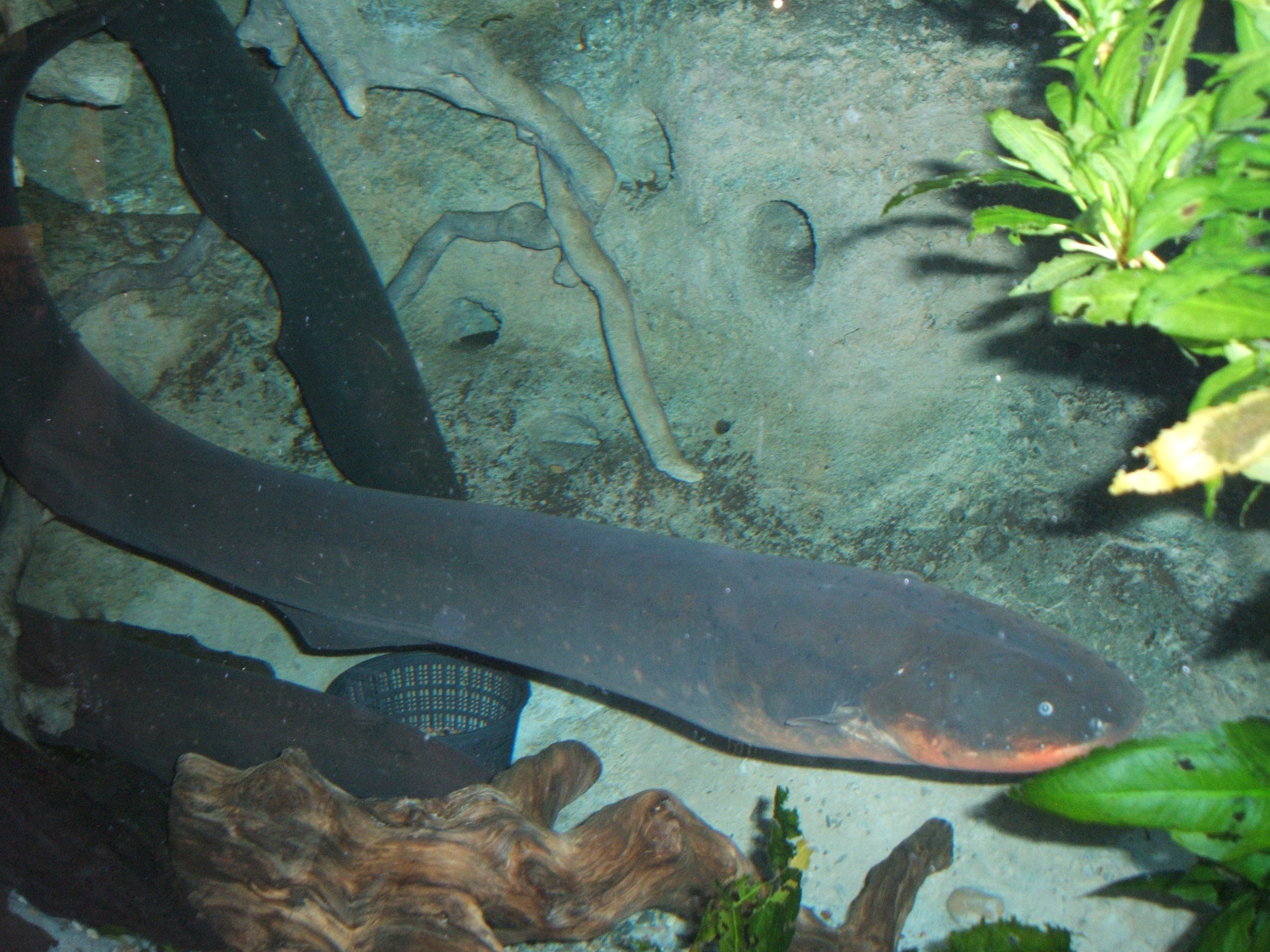Professor Kenneth Catania is indeed a brave man. He let himself be stung by an electric eel ten times. During this experiment his arm remained coupled with a measuring device so that the intensity of the shock could be measured. In science one data point is inclusive and hence 10 times!. After all repeatability and reproducibility are the hallmarks of Science. All 'In the Name of Science' Washington Post commented. The research paper(see ref.2) appeared in the Sept. 25th(2017) issue of Current Biology. Catania had selected a smal, juvenile electric eel for the experiment, and the mild shock of about 40-50mAmp, generated acute short term pain, but no long-lasting injuries. An eel can deliver two types of shocks, low voltage when they are linear and high voltage when they curl up.
 |
| Electric Eel Courtesy wikipedia |
Major part of the eel's body, almost 80% is a powerhouse. Electrocytes, the electricity producing cells are compacted in parallel stacks inside the electric organ. Neurotransmitter acetylcholine is the messenger that signals the cells to align and get activated. As Na+ K+ ion channels open and close in a synchronous fashion a voltage across the anterior and posterior membranes of the cell is developed. Each cell contributes a tiny amount of electricity but when linked in series the output adds up. In an airborne attack, that is when the eel leaps out of water the blow could be stunning.
 |
| Voltage development across a cell membrane courtesy: wikipedia |
 |
| As described in Ref 4 |
References:
1 Biologists reaches into electric eel tank, comes out with equation to measure shocks 2. Power transfer to a Human during an Electric Eel's Shocking Leap
3. Watch an electric eel zap a biologist in the name of Science
4. An electric eel inspired soft power source from stacked hydrogels.
No comments:
Post a Comment